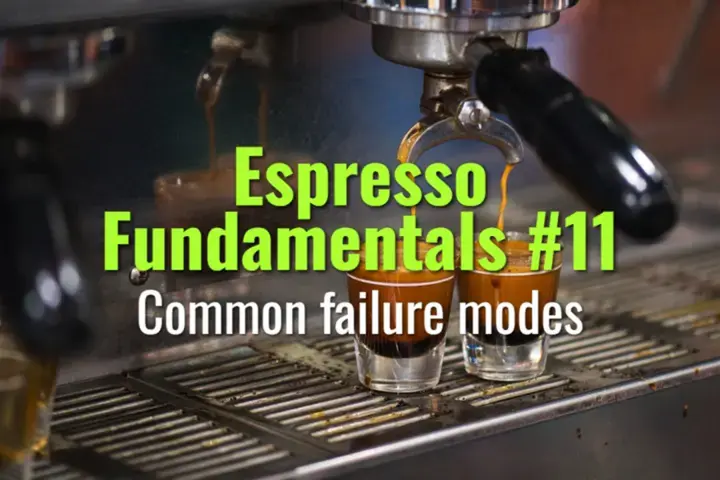Common failure modes
The most frequent causes of failed espresso shots, how to recognize them, and how to correct them quickly.
- Coffee Basics Nerds
- 1 min read

Common Failure Modes
-
Channelling:
-
Water finds weak paths through the puck.
-
Signs: spurting, uneven flow, blonding early.
-
Fixes: improve puck prep (distribution, tamp), ensure even grind.
-
Under-Extraction:
-
Sour, sharp, thin body.
-
Causes: grind too coarse, too short time, too low dose or temperature.
-
Fixes: grind finer, lengthen time, raise temperature.
-
Over-Extraction:
-
Bitter, hollow, astringent.
-
Causes: grind too fine, long shot time, excessive yield.
-
Fixes: grind coarser, shorten shot, reduce yield.
-
Channel Collapse / Puck Fracture:
-
Uneven tamp or basket overfilling causes puck to crack under pressure.
-
Signs: gushing or uneven blonding.
-
Fixes: correct dosing, level tamping, avoid knocking portafilter.
-
Temperature Instability:
-
Inconsistent flavor between shots.
-
Causes: machine not fully warmed, poor PID control, cooling flushes neglected.
-
Fixes: stabilize grouphead, follow warm-up protocols.
-
Grinder Retention or Inconsistency:
-
Old grounds mixing with fresh ones → inconsistent shots.
-
Fixes: purge grinder, single-dose workflow, maintain burrs.
-
Dirty Equipment:
-
Oils and fines build up in baskets or shower screens.
-
Causes rancid, bitter, or ashy flavors.
-
Fixes: regular backflushing, basket cleaning, detergent use.
Summary
Espresso failure modes include channelling, under- or over-extraction, puck collapse, temperature swings, grinder issues, and dirty equipment. Recognizing signs quickly and applying targeted corrections ensures consistently balanced espresso.